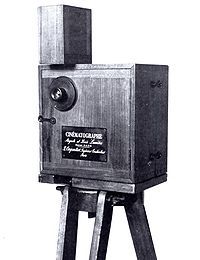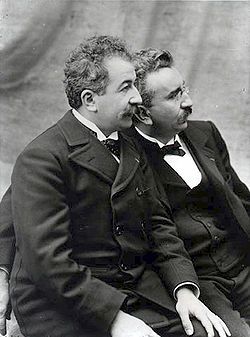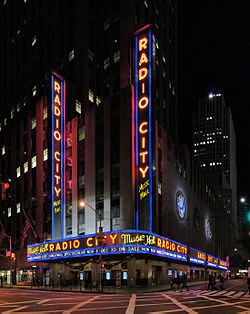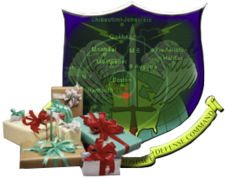December 26 is the 360th day of the year 1135 – Coronation of King Stephen of England.
1481 – Battle of Westbroek: Holland defeats troops of Utrecht.
1613 – Robert Carr, 1st Earl of Somerset, marries Frances Howard.
1776 – American Revolutionary War: The British are defeated in the Battle of Trenton.
1790 – Louis XVI of France gives his public assent to Civil Constitution of the Clergy during the French Revolution.
1792 – The final trial of Louis XVI of France begins in Paris.
1793 – Second Battle of Wissembourg: French defeat Austrians.
1805 – Austria and France sign the Treaty of Pressburg.
1806 – Battles of Pultusk and Golymin: Russian forces hold French forces under Napoleon.
1811 – A theater fire in Richmond, Virginia kills the Governor of Virginia George William Smith and the president of the First National Bank of Virginia Abraham B. Venable.
1861 – American Civil War: The Trent Affair: Confederate diplomatic envoys James M. Mason and John Slidell are freed by the United States government, thus heading off a possible war between the United States and Britain.
1862 – American Civil War: The Battle of Chickasaw Bayou begins.
1862 – Four nuns serving as volunteer nurses on board USS Red Rover are the first female nurses on a U.S. Navy hospital ship.
1862 – The largest mass-hanging in U.S. history took place in Mankato, Minnesota, 38 Native Americans die.
1870 – The 12.8-km long Frejus Rail Tunnel through the Alps is completed.
1871 – Gilbert and Sullivan collaborate for the first time, on their lost opera, Thespis. It does modestly well, but the two would not collaborate again for four years.
1898 – Marie and Pierre Curie announce the isolation of radium.
1919 – Babe Ruth of the Boston Red Sox is sold to the New York Yankees by owner Harry Frazee.
1925 – Turkey adopts the Gregorian Calendar.
1933 – FM radio is patented.
1941 – U.S. President Franklin D. Roosevelt signs a bill establishing the fourth Thursday in November as Thanksgiving Day in the United States.
1943 – World War II: German warship Scharnhorst is sunk off of Norway’s North Cape after a battle against major Royal Navy forces.
1944 – World War II: Patton’s Third Army breaks the encirclement of surrounded U.S. forces at Bastogne, Belgium.
1945 – CFP franc and CFA franc are created.
1948 – Cardinal Mindszenty is arrested in Hungary and accused of treason and conspiracy.
1966 – The first Kwanzaa is celebrated by Maulana Karenga, the chair of Black Studies at California State University, Long Beach.
1972 – Vietnam War: As part of Operation Linebacker II, 120 American B-52 Stratofortress bombers attacked Hanoi, including 78 launched from Andersen Air Force Base in Guam, the largest single combat launch in Strategic Air Command history.
1975 – The Tupolev Tu-144 goes into service in Soviet Union.
1976 – The Communist Party of Nepal Marxist-Leninist) is founded.
1980 – Aeroflot puts the Ilyushin Il-86 into service.
1982 – Time Magazine’s Man of the Year is for the first time a non-human, the personal computer.
1986 – The first long-running American television soap opera, Search for Tomorrow, airs its final episode after thirty-five years on the air.
1991 – The Supreme Soviet of the Soviet Union meets and formally dissolves the USSR.
1994 – Four Armed Islamic Group hijackers seize control of Air France Flight 8969. When the plane lands at Marseille, a French Gendarmerie assault team boards the aircraft and kills the perpetrators.
1996 – Six-year-old beauty queen JonBenet Ramsey is found beaten and strangled in the basement of her family’s home in Boulder, Colorado.
1996 – Start of the largest strike in South Korean history.
1997 – The Soufriere Hills volcano on the island of Montserrat explodes, creating a small tsunami offshore.
1998 – Iraq announces its intention to fire upon U.S. and British warplanes that patrol the northern and southern no-fly zones.
1999 – The storm Lothar sweeps across Central Europe, killing 137 and causing US$1.3 billion in damage.
2003 – A magnitude 6.6 earthquake devastates southeast Iranian city of Bam, killing tens of thousands and destroying the citadel of Arg-e Bam.
2004 – A 9.3 magnitude earthquake creates a tsunami causing devastation in Sri Lanka, India, Indonesia, Thailand, Malaysia, the Maldives and many other areas around the rim of the Indian Ocean, killing over 250,000 people including over 1700 on a moving train.
2004 – Orange Revolution: The final run-off election is held under heavy international scrutiny.
2005 – Boxing Day shooting on a busy shopping street in Toronto.
2006 – The 2006 Hengchun earthquake with 7.1 magnitude hit Taiwan.
2006 – An oil pipeline in Lagos, Nigeria explodes, killing at least 260.
Holidays and observances
* Boxing Day, except when 26 December is a Sunday Boxing Day is transferred to 27 December by Royal Proclamation. (Commonwealth of Nations), and its related observances:
o Day of Good Will (South Africa and Namibia)
* Christian Feast Day:
o Abadiu of Antinoe (Coptic Church)
o Earliest day on which Feast of the Holy Family can fall, celebrated on Sunday after Christmas or 30 if Christmas falls on a Sunday.
o James the Just (Eastern Orthodox Church)
o Stephen (Western Church)
o Synaxis of the Theotokos (Eastern Orthodox Church)
* Independence and Unity Day (Slovenia)
* Mauro Hamza Day (Houston, Texas)
* Mummer’s Day (Padstow, Cornwall)
* St. Stephen’s Day (public holiday in Alsace, Austria, Catalonia, Croatia, the Czech Republic, Germany, Hong Kong, Italy, Ireland, Luxembourg, Poland and Slovakia), and its related observances:
o Father’s Day ([Bulgaria)
* Thanksgiving (Solomon Islands)
* The first day of Kwanzaa, celebrated until January 1 (United States)
* The first day of Junkanoo street parade, the second day is on the New Year’s Day (the Bahamas)
* The second day of Christmas (Western Christianity)
* The first of Twelve Holy Days (Esoteric Christianity)
* Wren Day (Ireland and the Isle of Man) (361st in leap years) in the Gregorian calendar. There are five days remaining until the end of the year.
On this day in 1890, the Wounded Knee Massacre took place near Wounded Knee Creek (Lakota: Cankpe Opi Wakpala) on the Lakota Pine Ridge Indian Reservation in South Dakota.

 On this day in 1895,
On this day in 1895, 
 On this day in 1932,
On this day in 1932,  On this day in 1776,
On this day in 1776,  On this day in 1955,
On this day in 1955, 


Recent Comments